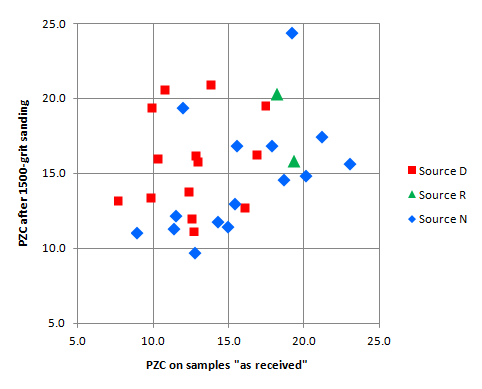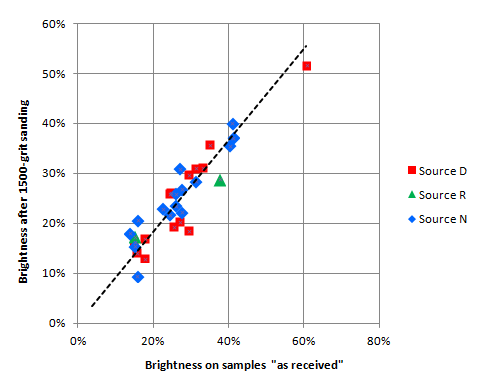Wood chatoyance is affected by many parameters, amongst which final sanding and darkening by air or light exposure. As a consequence, wood samples do not always show the intrinsic wood chatoyance.
31 samples from 3 different sources and 22 different wood species were tested in the “as received” condition and then after 1500-grit sanding.
In terms of PZC (visible chatoyance), charts below summarize the results. It may be noticed that there is no strict correlation between chatoyance in the “as received” condition and chatoyance after sanding. Therefore, looking at a sample “as received” does not tell all the story about the wood properties. However, samples “as received” showing high chatoyance generally show high chatoyance also after sanding.

In terms of surface brightness there is a good match between brightness before and after fine sanding. On average, brightness after fine sanding is 6% lower than in the “as received” condition. However, there is some variation, with some samples that are 30% brighter (Tali and Honduras Mahogany), possibly due to aging, and samples that are 40% darker (Sipo and Niangon), possibly due to a significantly reduced diffused reflection.

Generally, it can be concluded that planed or rough sanded samples do not provide good information about the underlying wood chatoyance.
Pictures below show some comparison examples:





Sipo as received – PZC = 19.1 – Brightness = 0.157


